Staufenbiel Red Bull F4U-4 Corsair BNF Basic
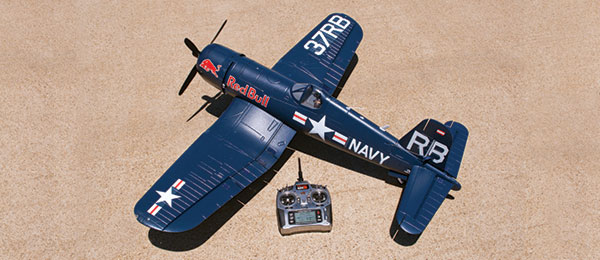
Written by Terry Dunn Put on your own air show with this large foam model Abridged product review Photos by the author Read the full product review in the September 2016 issue of Model Aviation.
Bonus video
Abridged Product Review
If you’ve never seen a full-scale F4U Corsair perform at an air show, you owe it to yourself to punch that ticket. There are often many impressive aircraft at any given air show. But for me, nothing quite matches the sight, sound, and visceral punch that a Corsair provides. One shining example of a surviving Corsair is part of the Flying Bulls Collection in Salzburg, Austria.The Flying Bulls’ Corsair is the inspiration for a new RC model by Staufenbiel. This electric-powered aircraft has a 55.6-inch wingspan and all-foam construction. It is a BNF model that includes a Spektrum AR636A receiver with AS3X stabilization.The Kit
The Staufenbiel Corsair is large for a foamie. All of the airframe components are prepainted and have preapplied decals. A large, 540 Kv E-flite brushless motor is provided to propel the Corsair. It swings a four-blade propeller, which really accentuates the model’s scalelike appearance. An accurately sized pilot bust is included as well.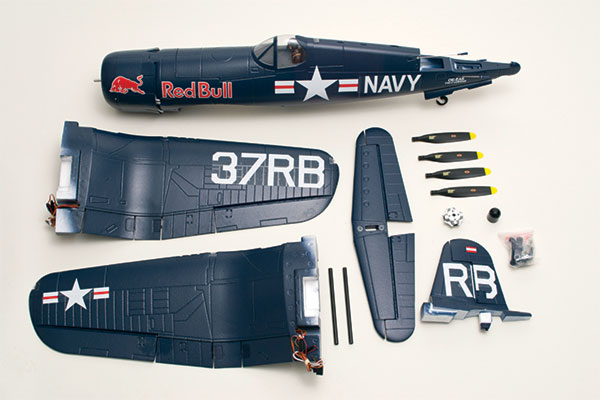
The Staufenbiel Red Bull F4U-4 Corsair is a large, prefinished foam model. It includes everything except a DSMX-compatible transmitter and a four-cell LiPo battery.
This model requires a four-cell 2,400 to 2,800 mAh LiPo battery. The battery fits into an angled compartment in the fuselage. An E-flite 70-amp ESC links the battery to the motor. The ESC’s built-in switching BEC provides power for the entire radio system. A large hatch allows access to the battery compartment and some of the radio gear. The radio bay includes a Spektrum AR636A receiver and two 17-gram digital servos. These servos, like all of the others in the model, are not directly attached to the receiver. Instead, they are first connected to a circuit board that is located on a plywood mount above the wing halves. The ailerons are actuated by another pair of 17-gram servos. A final pair of 17-gram servos is used to manipulate the model’s wing flaps. Electronic retracts are factory mounted in the wing. Like the full-scale Corsair, the wheel axle rotates 90° as the gear retracts or extends. A separate 9-gram servo in each wing panel opens and closes the landing gear bay doors.
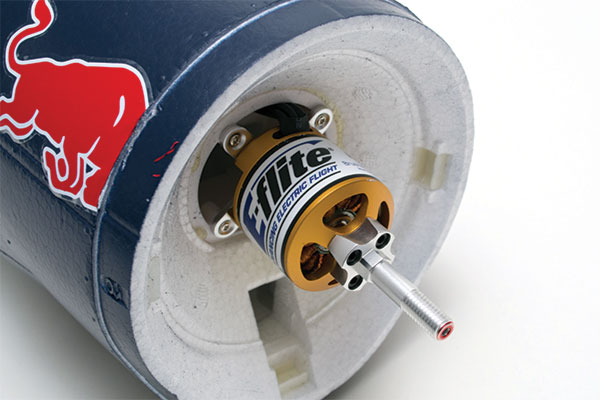
A 540 Kv brushless outrunner motor is included and is factory mounted to the airframe.
Assembling the Corsair
Although most of the work is done at the factory, there are still several important finishing steps that need to be completed. Resist the temptation to breeze through these tasks. The Corsair is a large, powerful model that requires thoughtful preparation to ensure success. Plan to spend an evening or two to get things right. I linked the included AR636A receiver to my Spektrum DX8 transmitter. The manual provides suggested control throws, which I followed. I also added 30% exponential to the ailerons, elevator, and rudder. I initially used an E-flite 4S 2,800 mAh 30C LiPo battery. With this pack located in the battery slot, the model balanced approximately 1/4 inch forward of the suggested center of gravity (CG) location. I flew the maiden flight with the forward CG and quickly wished I hadn’t. I suggest that you stick with the recommended CG. To get the CG where it should be, I moved the ESC from the motor cowling to the radio bay. I also added a hook-and-loop strap behind the battery slot. This allowed me to locate the battery farther aft. The strap also lets me use a variety of batteries while still maintaining the correct CG.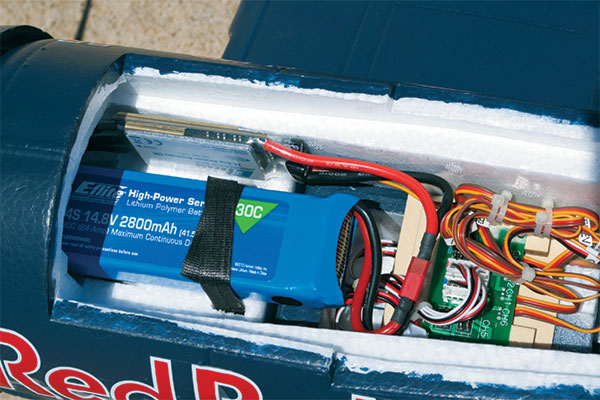
To get the correct CG, I moved the ESC to the radio bay and added a hook-and-loop strap to mount the battery outside of its molded pocket. Note the green circuit board through which all of the servo leads are routed.
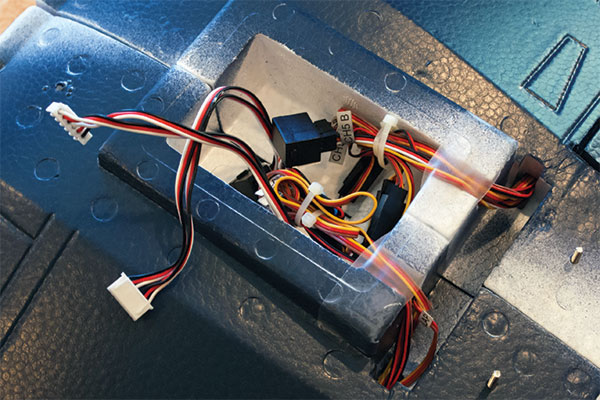
The wires coming from the wing halves are consolidated into a pair of six-pin plugs. This makes installing and removing the wing halves easy.
Flying the Corsair
It might be a foamie, but the completed Corsair is a large and impressive model. It looks good sitting on the tarmac, but it looks even better in the air! I like to hold a tad of up-elevator as I begin the takeoff roll. This prevents the nose from pointing down as the tail wheel lifts and the airplane is rolling on the main wheels. The Corsair quickly builds speed and is usually airborne before I hit full throttle. As soon as the model is flying, I begin retracting the landing gear. It has a slow, scalelike movement. The autosequencing gear doors are also a nice touch. It takes roughly 10 seconds for all of the movement to be completed. Keep this in mind if you ever have to make a sudden emergency landing. You may be better off keeping the gear retracted than landing with it partially deployed. The Corsair likes to be flown with a lot of power. The suggested control rates work well for large, warbird-style aerobatics. I typically use high-rate throws for the entire flight. Aileron rolls are quick and axial. When you relax the controls, the Corsair instantly ceases rolling. That behavior is a product of the AS3X stabilization built into the receiver. This model really shines when making fast, low photo passes. It looks great humming over the runway in a gentle banking turn. Although the model isn’t blazingly fast, it is reasonably speedy. I like to land on the main wheels and let the tail wheel settle on its own. If there is a breeze of 5 mph or more down the runway, I am apt to land without flaps. I reserve the flaps for those light wind days. In either case, the Corsair is well behaved on approach and presents no real challenges for landing.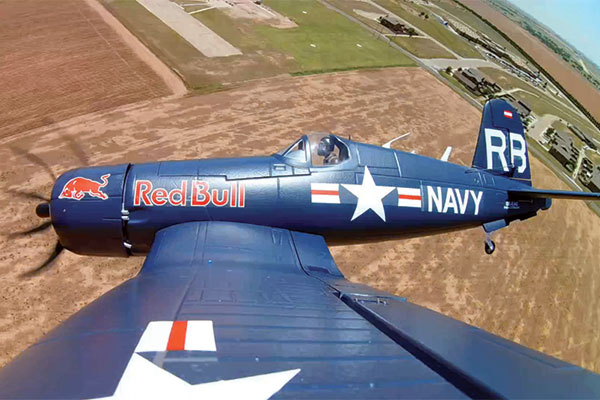










2 comments
Excellent review,
Electric Flight
Add new comment